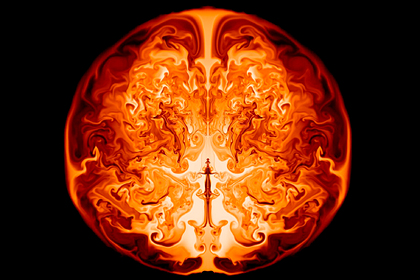
An international team of astronomers has predicted the existence of a new class of supernovae, arising from the explosion of a supermassive star and leading to the appearance of a huge black hole. Scientists believe that such black holes can serve as a “seed” for supermassive black holes, whose origin is still a mystery. The researchers' article was published in the Monthly Notices of the Royal Astronomical Society. The scientific work is briefly described in a press release on Phys.org.
The leading theory is that the seeds of supermassive black holes formed after the death of the first massive stars in the early universe, and then these seeds continued to accumulate surrounding gas and finally turned into supermassive black holes. However, scientists have not found such massive stars in the local Universe, and the mass of the record holders is comparable only to 100-200 Suns. They would not be able to maintain a high level of accretion of matter.
In a new article, the researchers uncovered the possible existence of a class of supernovae from stars with a mass of tens of thousands of Suns that existed in small numbers in the early Universe. Modeling of these objects has shown that during the upcoming mission of the James Webb Space Telescope, scientists have a chance to observe such a supernova, which in this case will confirm the theory of the mechanism of the appearance of supermassive black holes.

